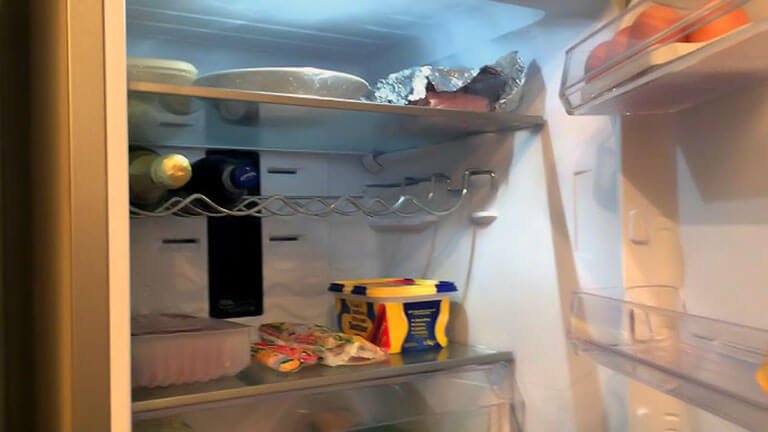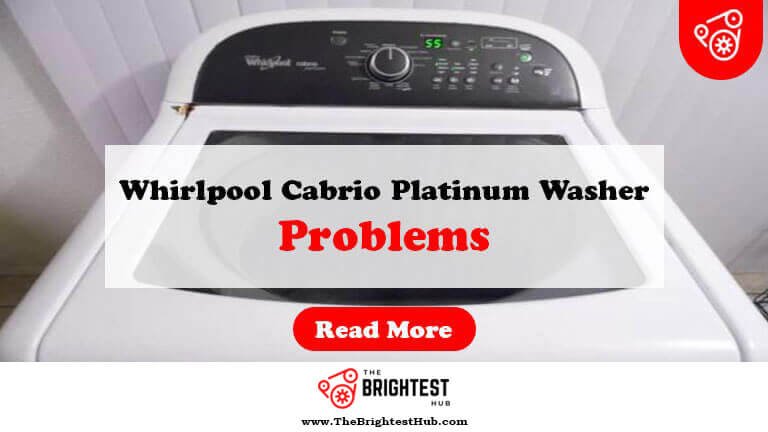Hotpoint Refrigerator Problems: Quick Fixes & Tips
Hotpoint refrigerators can face issues like inconsistent cooling, noisy operation, and door seal problems. Troubleshooting these issues can restore optimal performance.
Hotpoint refrigerators are popular for their reliability and efficiency. However, like any appliance, they can encounter problems over time. Common issues include temperature fluctuations, strange noises, and leaks. Regular maintenance is vital to keep your refrigerator in top shape. Understanding the root causes of these problems helps in effective troubleshooting.
Many users report that simple fixes can resolve these concerns without costly repairs. Knowing how to identify these issues early can save time and money. This guide will explore common Hotpoint refrigerator problems and provide practical solutions to enhance your appliance’s longevity and efficiency. Proper care ensures your refrigerator serves you well for years.
Common Issues With Hotpoint Refrigerators

Hotpoint refrigerators are popular for their efficiency. Yet, they can face problems. Understanding these issues helps you maintain your appliance. Below are some common problems that many users experience.
Temperature Inconsistencies
Temperature issues are frequent with Hotpoint refrigerators. These problems affect food preservation. Here are some reasons for temperature inconsistencies:
- Faulty Thermostat: A malfunctioning thermostat can cause irregular temperatures.
- Blocked Vents: Blockages can restrict airflow, leading to uneven cooling.
- Dirty Condenser Coils: Dusty coils hinder cooling efficiency.
- Door Seal Problems: Worn seals let warm air enter.
To address temperature issues, consider these steps:
- Check the thermostat setting.
- Clean the condenser coils.
- Inspect door seals for damage.
- Ensure vents are clear.
Unusual Noises
Unusual noises can indicate issues with your Hotpoint refrigerator. These sounds may cause concern. Common noises include:
| Noise Type | Possible Cause |
|---|---|
| Buzzing | Compressor issues or fan problems. |
| Hissing | Refrigerant flow or defrost drain issues. |
| Clicking | Faulty relay or compressor start issues. |
| Rattling | Loose parts or items in the fridge. |
Identifying the source of these noises is crucial. Regular maintenance can prevent many of these issues.
Troubleshooting The Cooling System
Hotpoint refrigerators can face cooling issues. Troubleshooting these problems helps restore their function. Start by checking some key components. This guide covers two main areas: the thermostat and the coils.
Checking The Thermostat
The thermostat controls the temperature inside the fridge. A faulty thermostat can cause cooling issues. Follow these steps to check it:
- Locate the thermostat inside the fridge.
- Set the temperature to a lower setting.
- Listen for a click sound. This means it’s working.
- Use a thermometer to check the temperature.
- If the temperature is not correct, replace the thermostat.
Remember, a properly functioning thermostat is crucial for cooling.
Inspecting Coils And Fans
Dirty coils and faulty fans can cause cooling problems. Regular inspection helps keep the fridge running smoothly. Here’s how to inspect them:
- Coils:
- Locate the coils, usually at the back or bottom.
- Use a vacuum or brush to clean them.
- Fans:
- Check the condenser fan for dust and debris.
- Ensure the fan blades spin freely.
- If the fan is not working, replace it.
Clean coils and functional fans help maintain proper cooling.
Dealing With Frost Buildup
Frost buildup in your Hotpoint refrigerator can cause issues. It reduces storage space and affects cooling efficiency. Proper maintenance is vital to keep your appliance running smoothly.
Defrost Cycle Tips
Understanding your refrigerator’s defrost cycle is crucial. Here are some helpful tips:
- Check the defrost timer regularly.
- Keep the refrigerator temperature around 37°F (3°C).
- Ensure the defrost drain is clear.
- Manually defrost if frost exceeds 1/4 inch.
Watch for signs of malfunction. Look for excessive frost or strange noises. These may indicate a problem with the defrost cycle.
Seal And Gasket Checks
The door seals on your refrigerator play a vital role. They prevent warm air from entering. Regular checks can save energy and reduce frost buildup.
Follow these steps for effective seal and gasket checks:
- Inspect the door seals for cracks or tears.
- Clean the gaskets with warm, soapy water.
- Perform a “dollar bill test.” Close the door on a bill. If it slips out easily, the seal is weak.
- Replace any damaged gaskets promptly.
Maintaining the seals keeps your fridge efficient. This action helps avoid frost buildup and saves energy costs.
Water Dispenser Malfunctions
Hotpoint refrigerators often face issues with their water dispensers. These malfunctions can be frustrating. Understanding common problems helps in quick fixes.
Filter Replacements
Water filters play a crucial role in maintaining clean water. If your dispenser is slow or not working, check the filter.
- Replace the filter every 6 months.
- Use genuine Hotpoint filters for best results.
- Check the filter installation for proper fit.
Signs of a clogged filter include:
- Weak water flow
- Discoloration of water
- Bad taste or odor
Water Line Inspections
A blocked or damaged water line can cause dispenser issues. Regular inspections ensure smooth water flow.
Check these aspects:
| Inspection Area | What to Look For |
|---|---|
| Water Line Connection | Ensure it’s tight and leak-free. |
| Water Line Condition | Look for kinks or cracks. |
| Ice Blockage | Clear any ice build-up in the line. |
Perform these checks regularly to prevent future problems. Keeping the water line clear promotes better performance.
Tips To Enhance Refrigerator Performance
Boosting your Hotpoint refrigerator’s efficiency can save energy and improve food storage. Follow these practical tips to keep your appliance running smoothly.
Proper Interior Arrangement
How you organize your fridge affects its performance. Here are some tips:
- Keep air circulation clear: Avoid overcrowding shelves.
- Store similar items together: Group dairy, meats, and veggies.
- Use bins: Keep small items organized.
- Label containers: Make finding items easier.
Consider these key points:
| Item Type | Best Location |
|---|---|
| Dairy Products | Top shelves |
| Meats | Bottom shelves |
| Vegetables | Crisper drawers |
| Leftovers | Middle shelves |
Regular Cleaning Routines
Cleaning your refrigerator helps maintain its efficiency. Follow these steps:
- Monthly cleaning: Wipe down shelves and walls.
- Check expiration dates: Discard old food regularly.
- Clean the coils: Dust and dirt can hinder performance.
- Clear the drains: Ensure water flows freely.
Use a mixture of vinegar and water for a natural cleaner. This solution removes odors and bacteria effectively.
Implement these tips to enhance your Hotpoint refrigerator’s performance. A well-maintained fridge keeps food fresh and saves energy.
Electrical Issues And Fixes
Hotpoint refrigerators may face various electrical problems. These issues can disrupt cooling and lead to food spoilage. Understanding how to diagnose and fix these problems is crucial.
Power Supply Checks
Start with basic power supply checks. This ensures your refrigerator receives the necessary voltage.
- Check the power cord for damage.
- Ensure the outlet is functional.
- Use a multimeter to measure voltage.
Follow these steps for effective checks:
- Unplug the refrigerator.
- Inspect the power cord visually.
- Plug it back in and test the outlet.
Sometimes, a blown fuse may cause issues. Replace any blown fuses promptly.
Control Board Diagnostics
The control board manages the refrigerator’s functions. A malfunctioning board can cause cooling problems.
To diagnose control board issues, follow these steps:
- Unplug the refrigerator.
- Remove the control board cover.
- Look for burnt components.
- Check for loose connections.
Use a multimeter to test components:
| Component | Test Procedure | Expected Reading |
|---|---|---|
| Capacitor | Measure voltage | Should match specifications |
| Relay | Check continuity | Should show low resistance |
If the control board is faulty, replacement may be necessary. Refer to the user manual for specific instructions.
Replacing Common Faulty Components
Hotpoint refrigerators may face issues over time. Many problems arise from faulty components. Replacing these parts can restore your fridge’s performance. This section covers common replacements like the thermostat and motor.
Thermostat Replacement
The thermostat controls the temperature in your refrigerator. A faulty thermostat can lead to inconsistent cooling. Follow these steps to replace it:
- Unplug the refrigerator.
- Locate the thermostat, usually at the back of the fridge.
- Remove the cover and disconnect the wires.
- Replace with a new thermostat.
- Reconnect the wires and cover.
- Plug the refrigerator back in.
Check the temperature after a few hours. Ensure it stays within the recommended range.
Motor And Fan Solutions
The motor and fan work together to circulate cool air. A malfunction can cause your fridge to overheat or not cool at all. Here’s how to address motor and fan issues:
- Listen for unusual noises.
- Check if the fan spins freely.
- Inspect the motor for any visible damage.
If repairs are needed, follow these steps:
- Unplug the refrigerator.
- Remove the back panel to access the motor.
- Disconnect the faulty motor.
- Install a new motor and reconnect the wiring.
- Reassemble the back panel.
- Plug the refrigerator in and test the fan.
Regular checks help maintain optimal performance. Replace any worn-out components quickly.
When To Seek Professional Help
Hotpoint refrigerators can experience various issues. Some problems are simple to fix. Others require professional attention. Knowing when to seek help can save time and money. Here’s how to identify complex issues and find qualified technicians.
Identifying Complex Issues
Some signs indicate serious problems with your Hotpoint refrigerator. Watch for these issues:
- Compressor Noise: Loud or unusual sounds may signal a failing compressor.
- Temperature Fluctuations: Inconsistent cooling can spoil food.
- Leaks: Water pooling inside or outside the fridge suggests a problem.
- Frost Build-Up: Excessive frost can indicate a defrost issue.
- Electrical Issues: Flickering lights or a tripped breaker may need expert help.
If you notice any of these signs, do not hesitate to seek help. Ignoring them may cause bigger problems.
Finding Qualified Technicians
Finding a qualified technician is crucial for repairs. Here are some tips:
- Check Reviews: Look for technicians with positive customer feedback.
- Ask for Certification: Ensure they are certified to work on Hotpoint appliances.
- Get Multiple Quotes: Compare prices to find a fair deal.
- Verify Experience: Choose technicians with experience in refrigerator repairs.
Finding the right technician can make repairs quick and efficient. Always choose a professional for complex issues.
Frequently Asked Questions
What Are Common Hotpoint Refrigerator Issues?
Common issues include temperature fluctuations, unusual noises, and ice buildup.
How To Fix A Noisy Hotpoint Refrigerator?
Check for loose components, clean the condenser coils, and ensure the fridge is level.
Why Is My Hotpoint Refrigerator Not Cooling?
Check the thermostat setting, clean the coils, and inspect the door seals for damage.
How To Troubleshoot A Leaking Hotpoint Refrigerator?
Inspect the door seals, check the drain pan, and ensure the fridge is level.
What Causes A Hotpoint Refrigerator To Freeze Food?
Incorrect thermostat settings or blocked air vents can cause freezing. Adjust the temperature settings accordingly.
Conclusion
Hotpoint refrigerators can encounter various issues that disrupt their efficiency. Understanding common problems is crucial for timely solutions. Regular maintenance and prompt repairs can extend the life of your appliance. Stay informed and proactive to ensure your refrigerator runs smoothly.
This will save you time, money, and unnecessary frustration.






